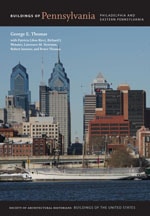The Pennsylvania Railroad and Pittsburgh Plate Glass were foundations of the fortune that have supported the construction of the Cathedral of the New Church for nearly a century. Designed by New York City Gothicists Cram, Goodhue and Ferguson, it is one of the premier examples of historic building practice, here represented by masonry, wood, ironwork, and stained glass guilds whose members handcrafted every element of the cathedral. Ralph Adams Cram's evocative design is intended to suggest the evolution of a site from the early Middle Ages in the Romanesque-styled Ezekiel Tower through to the fourteenth-century French Gothic of the main building and tower. Arthur Kingsley Porter, a Harvard medievalist, viewed the complex as “alone of modern buildings … worthy of comparison with the best of the middle ages.” Rivaling the Washington, D.C., National Cathedral and New York's St. John the Divine (also by Cram), it attests to the continuing hold of Gothic on the popular imagination.
You are here
Bryn Athyn Cathedral
1914–1919, Cram, Goodhue and Ferguson in association with Raymond Pitcairn. 1001 Cathedral Rd.
If SAH Archipedia has been useful to you, please consider supporting it.
SAH Archipedia tells the story of the United States through its buildings, landscapes, and cities. This freely available resource empowers the public with authoritative knowledge that deepens their understanding and appreciation of the built environment. But the Society of Architectural Historians, which created SAH Archipedia with University of Virginia Press, needs your support to maintain the high-caliber research, writing, photography, cartography, editing, design, and programming that make SAH Archipedia a trusted online resource available to all who value the history of place, heritage tourism, and learning.





